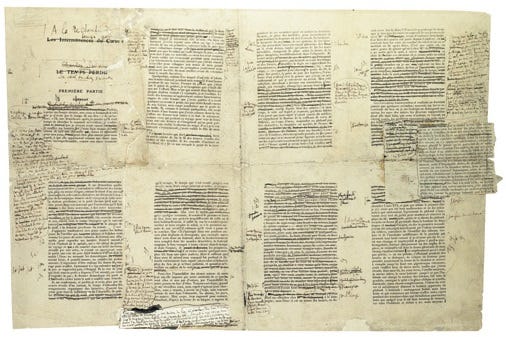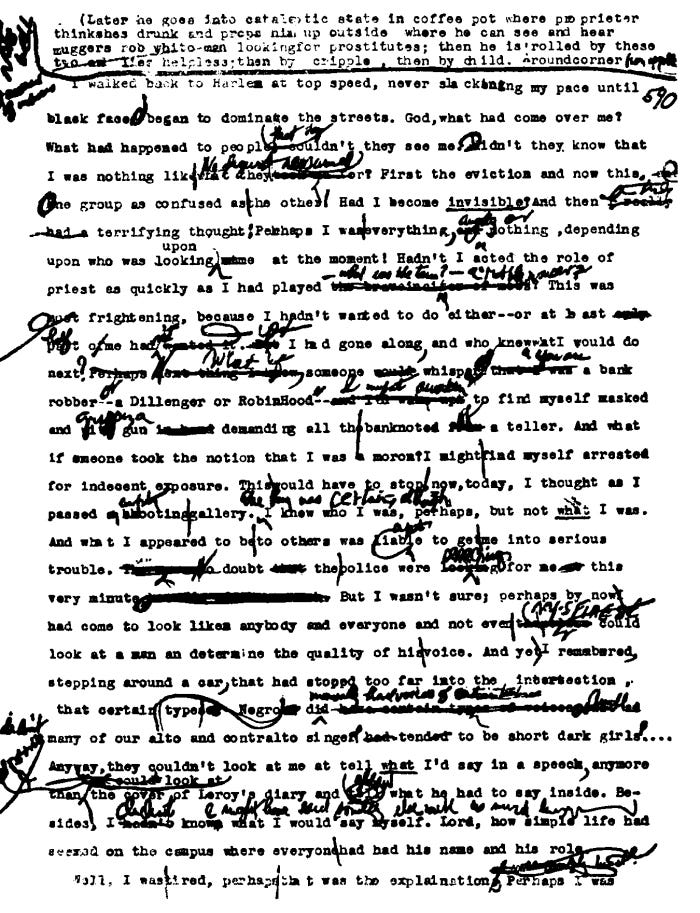Revision: rewriting, revising, rethinking, renovating
All laughed, except Guido himself. He asked for the typewriter and, fluently, as if he were writing under dictation, with broader gestures than practical typewriting demands, he wrote down his first tale. He was about to hand the little page to Luciano, but then he thought better of it, took it back, replaced it in the machine, and wrote a second; but this one cost him greater effort than the first, and so he forgot to keep simulating inspiration with his gestures, and he had to revise his words several times. So I believe the first of the two fables wasn’t his and only the second truly issued from his brain, of which it seems to me worthy.
Zeno, in Italo Svevo’s Zeno’s Conscience (translated by William Weaver)
Julius drew himself up.
“I don’t write for the sake of amusement,” he answered nobly. “The joy that I feel in writing is superior to any that I might find in living. Moreover, the one is not incompatible with the other.”
“So they say,” replied Lafcadio. Then abruptly raising his voice, which he had dropped as though inadvertently: “Do you know what it is I dislike about writing?—All the scratchings out and touchings up that are necessary.”
“Do you think there are no corrections in life too?” asked Julius, beginning to prick up his ears.
“You misunderstand me. In life one corrects oneself—one improves oneself—so people say; but one can’t correct what one does. It’s the power of revising that makes writing such a colorless affair—such a . . .” (He left his sentence unfinished.) “Yes! That’s what seems to me so fine about life. It’s like frescoe-painting—erasures aren’t allowed.”
Dencombe was a passionate corrector, a fingerer of style; the last thing he ever arrived at was far from final for himself. His ideal would have been to publish secretly, and then, on the published text, treat himself to the terrified revise, sacrificing always a first edition and beginning for posterity and even for the collectors, poor dears, with a second.


The Topical Guide continues after Episode 11 of the Personal History.
Have you missed an episode or two or several?
You can begin reading at the beginning or you can catch up by visiting the archive or consulting the index to the Topical Guide.
You can listen to the episodes on the Personal History podcast. Begin at the beginning or scroll through the episodes to find what you’ve missed.
You can ensure that you never miss a future issue by getting a free subscription. (You can help support the work by choosing a paid subscription instead.)
At Apple Books you can download free eBooks of “My Mother Takes a Tumble,” “Do Clams Bite?,” “Life on the Bolotomy,” “The Static of the Spheres,” “The Fox and the Clam,” “The Girl with the White Fur Muff,” and “Take the Long Way Home,” the first seven novellas in Little Follies.
You’ll find an overview of the entire work in An Introduction to The Personal History, Adventures, Experiences & Observations of Peter Leroy. It’s a pdf document.




Years ago I had a performance art piece scheduled at a place called Mobius in Boston. I requested the mailing list of the venue and started writing postcards to random people on the mailing list. I wrote as if we were old friends and I made each postcard vague enough so that it would apply to most of the recipients. Something like: “Hey John, how are you doing? Sorry we have been out of contact but I still remember that weekend when we went with the gang to New York City. That was a blast! I going to be performing at Mobius next week, I hope you can come by so we can catch up on old times. Peter”. I sent out a dozen of the post cards but then I got a call from Marilyn the director of Mobius. People were calling her who had been freaked out by my postcards. I had to stop sending them.